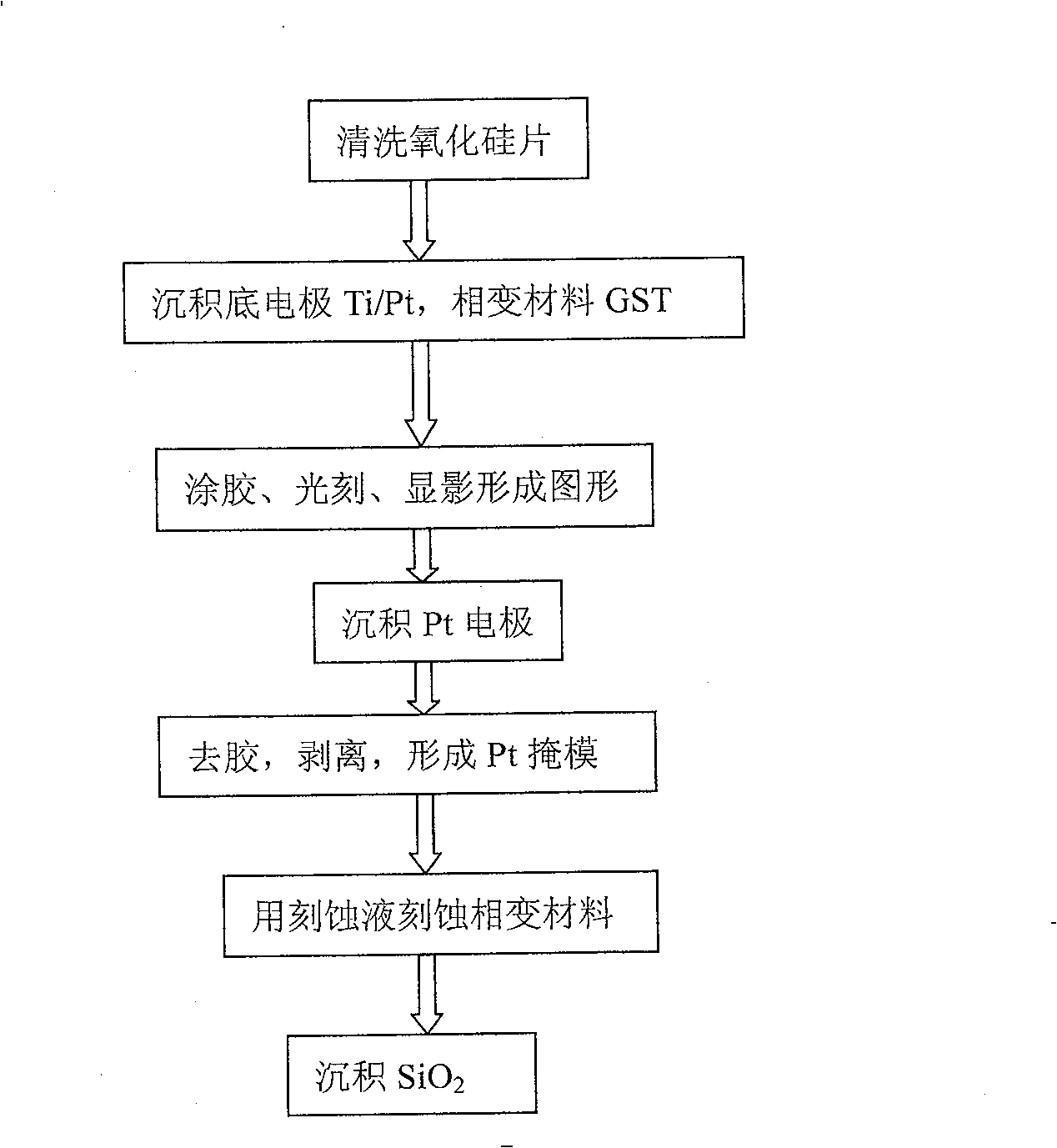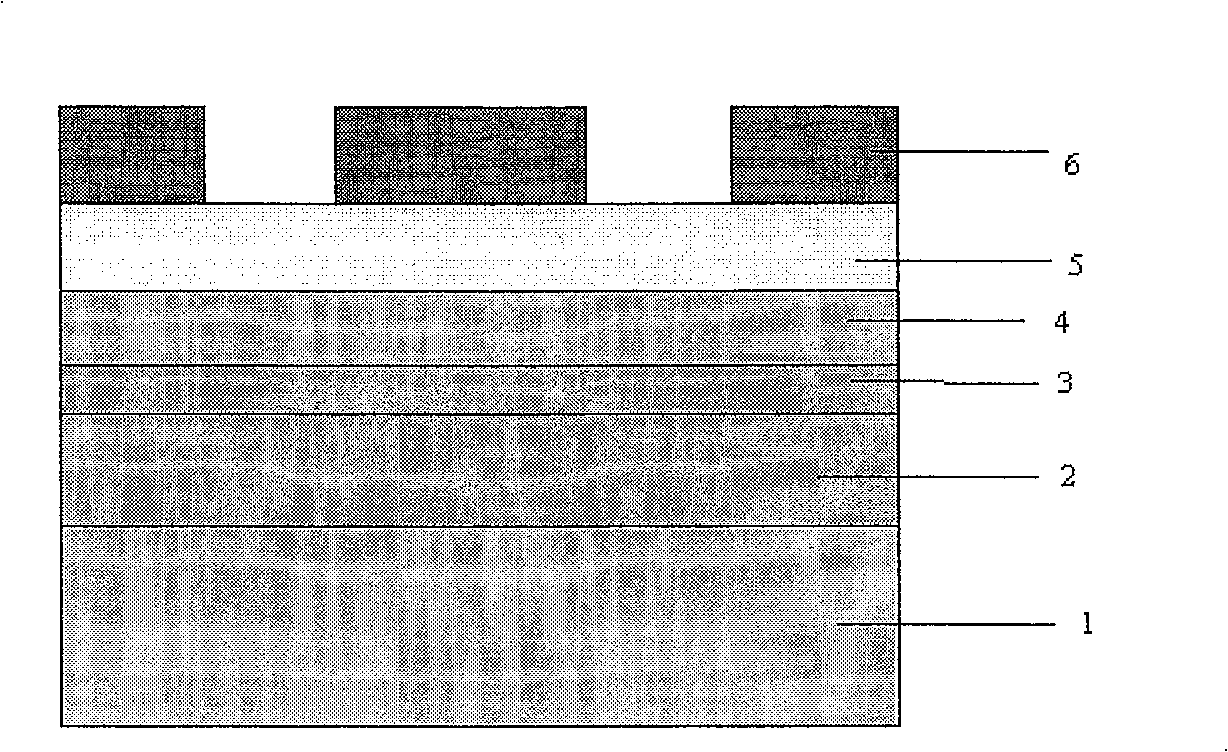Wet-method etching liquid for making phase change storage and its wet-method etching process
A wet etching and storage technology, applied in the field of microelectronics technology, can solve the problems of complexity and high cost of the manufacturing process
- Summary
- Abstract
- Description
- Claims
- Application Information
AI Technical Summary
Problems solved by technology
Method used
Image
Examples
Embodiment 1
[0030] (1) Configure 50 grams of wet etchant:
[0031] Take 10 grams of hydrochloric acid solution, add 3 grams of 30% H 2 o 2 solution, add 1 gram of ethylenediaminetetraacetic acid (EDTA), 0.5 gram of fatty alcohol polyoxyethylene ether (JFC), and add deionized water to the rest.
[0032] (2) Prepare samples for wet etching:
[0033] The silicon oxide wafer is ultrasonically cleaned with acetone, cleaned in the cleaning solution of ammonia water plus hydrogen peroxide, hydrochloric acid plus hydrogen peroxide, respectively, and blown dry with nitrogen after cleaning. Sputter a 30nm metal thin film Ti on a clean silicon oxide wafer with a magnetron sputtering table, then sputter a 100nm metal thin film Pt as the bottom electrode, and finally sputter a 200nm phase change material Ge 2 Sb 2 Te 5 . Coat the sputtered sample with photoresist, place it in a constant temperature box for 35 minutes, then expose it with a photolithography machine for 7 seconds, soak it in chlor...
Embodiment 2
[0038] (1) Configure 50 grams of etchant
[0039] Take 10 grams of tartaric acid, dissolve it in 30 grams of deionized water, add 1 gram of H 2 o 2 , add 1 gram of ethylenediaminetetraacetic acid (EDTA), add 1 gram of fatty alcohol polyoxyethylene ether (JFC), and add deionized water to the rest.
[0040] (2) Prepare etching samples.
[0041] Ultrasonic the silicon oxide wafer with acetone, wash it in the cleaning solution of ammonia water plus hydrogen peroxide, hydrochloric acid plus hydrogen peroxide respectively, and dry it with nitrogen after cleaning. Sputter a 50nm metal thin film Ti on a clean silicon oxide wafer with a magnetron sputtering table, then sputter a 100nm metal thin film Pt as the bottom electrode, and finally sputter a 300nm phase change material Ge 2 Sb 2 Te 5 . Coat the sputtered sample with photoresist, place it in a constant temperature box for 30 minutes, then expose it with a photolithography machine for 7 seconds, soak it in chlorobenzene for 5...
PUM
 Login to View More
Login to View More Abstract
Description
Claims
Application Information
 Login to View More
Login to View More - R&D
- Intellectual Property
- Life Sciences
- Materials
- Tech Scout
- Unparalleled Data Quality
- Higher Quality Content
- 60% Fewer Hallucinations
Browse by: Latest US Patents, China's latest patents, Technical Efficacy Thesaurus, Application Domain, Technology Topic, Popular Technical Reports.
© 2025 PatSnap. All rights reserved.Legal|Privacy policy|Modern Slavery Act Transparency Statement|Sitemap|About US| Contact US: help@patsnap.com



